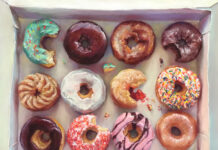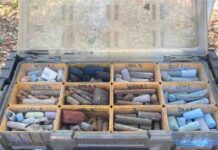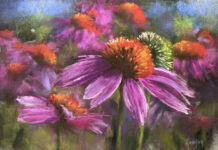As someone who’s been asked to judge a dozen or so art show competitions, Christopher Volpe offers an insider’s take on the judging process.
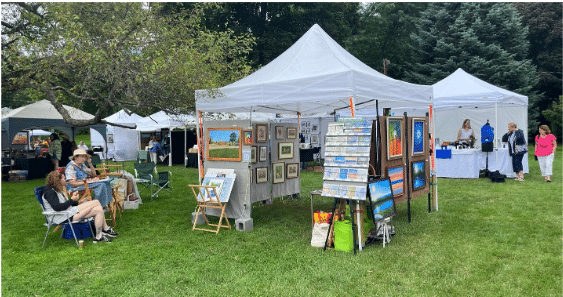
“Art contests are weird, mysterious beasts,” he says. “You can never be sure how serious to take them. As an artist entering your work, sometimes you know who’s judging, sometimes you don’t. Even when you do, it’s often anybody’s guess why one piece wins over another. And even though you know darn well how weird and subjective art competitions are, you can’t shake the feeling that at some level the judging is a referendum on your work, your talent, your calling even. Judges know this, and accordingly they do take the job seriously.
Who Gets to Judge and Why?
“Even to the judges, it’s often unclear how or why they’ve been asked to judge. It’s not because you know someone. You get an email or a call out of the blue, agree to do the gig, and eventually show up at the appointed place and time. And don’t think judges are chosen because they’re art-world rock stars, artists who’ve ‘made it.’ Often, far from it; sometimes a judge is picked just because someone at one art association asked someone at another to recommend one.
“When you come in as a judge, you have very little idea of what to expect.
“Formats vary widely. Some venues simply want you to walk around, look at all the art, and select a first second and third in the various media categories, based on whatever criteria you happen to carry around in your head.
“Within that format, my strategy is to first make a quick but thorough pass through the entire show and then ask myself what I remember. What stayed with me or impressed me most in each category and over all? I then go back to each medium as a group and look again carefully. If the initial stand-out selection still holds up, it comes down to deciding the second and third place winners.
“Some hosting venues take a different approach and provide their judges with guidelines that can vary from general considerations to being given a clipboard with gridded-out boxes for numerical scoring. That’s how it was for me during a recent tour of duty as an invited judge for an art fair in a city not far from my home.
What are Judges Looking For?
“Sometimes judges are given specific criteria to remove some of the subjectivity and establish a baseline of objective measurement. The criteria sheet below is an example. I think it’s a pretty standard set and gives a decent idea of the average considerations for the average judge going into the average art show.
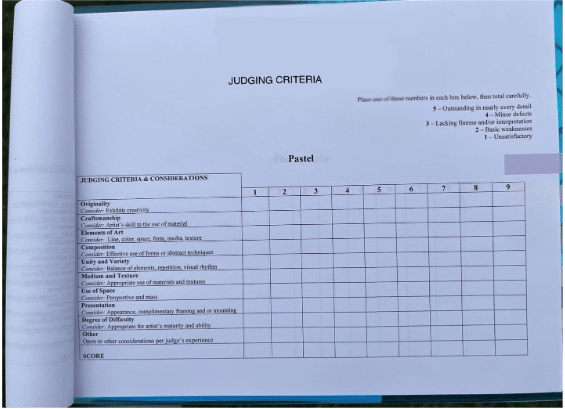
“In this case, each category had from one to nine entries, each of which was given a rating between 1 and 5, with 1 for unsatisfactory and 5 for outstanding, in the categories listed in the left column. These numbers were added up for an overall score earned by each entry.
“Still, despite objective criteria, personal intuition and bias come into play throughout the whole process. Partly this is a function of the sheer diversity of art fair work. How, for example, do you choose the ‘best’ entry in a ‘3D’ category consisting of 1. an exquisite piece of jewelry, 2. an elegant, psychedelic blown-glass sculpture, 3. a super-original hammered tin assemblage of an octopus painted with bright blue and pink acrylic paint, 4. a textile hanging woven by the artist of undyed wool and strands of human hair with an emphasis on design, tactility, and materiality and 5. a finely turned walnut vessel in the shape, apparently, of an elaborate fungus hitherto unknown to science?
“As an artist, I’m pretty sure I wouldn’t want to know this, but sometimes as a judge you just have to go with what you happen like or not like, for whatever reason, in that particular moment. Sometimes you know right away what’s going to get first place, and in that case it then comes down to rating the second and third-place winners against the standard of the clear first-place entry. Judging a show usually takes between one and two hours, so when you recognize a winner right away, you’re grateful (time saved!). But then, you may end up changing your mind after looking and thinking some more.
“I was a little surprised to find out from experience that there’s little to no bias or ‘who you know’ favoritism going on behind the art contest scenes. Whether the names are visible to you or not, as a judge you’re so fixated on all the minutia – looking for competency, mastery, skill in technique, composition, color, unity in variety, originality, expression and imagination – that you don’t even notice the signature, if there is one, until later, when you’re recording your choices.
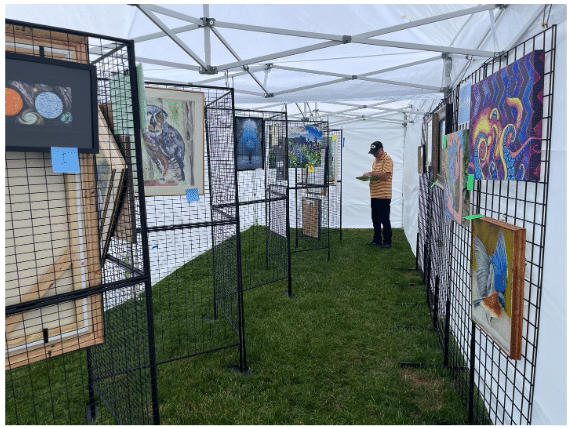
“As you can guess, each judge and thus each contest is different (it’s always a good idea to re-enter contests you didn’t win the first time, if you can bring yourself to it). Before you take a rejection as all-too well-deserved and beat yourself up about not winning something, consider this: chances are very good that what you would look for as a judge (and what you assume a judge is looking for) is not in fact what the judge is looking for at all.
“Artists and judges alike are uncomfortable with the whole process, because clipboard judging criteria or not, what makes art ‘good’ is of course invariably, eternally subjective. Which is probably a good thing!
“As a judge, I think my advice comes down to the following. There’s only one appropriate response to winning, and it’s the same response to losing or any suspicion that your work is falling short. And that’s to get back into the studio as soon as possible. Simple (and difficult) as that.
“The whole thing comes down to just keeping on doing what you’re doing and getting it in front of as many people as possible.”

